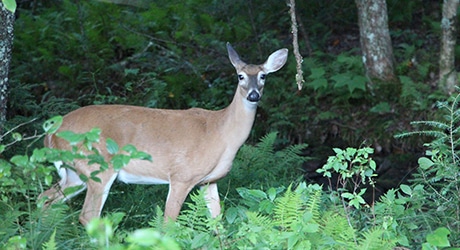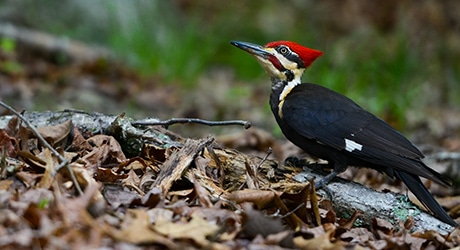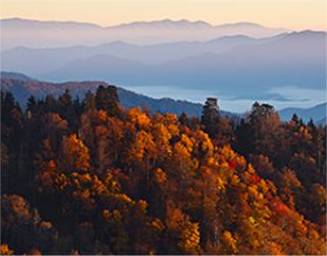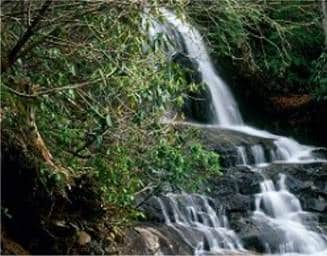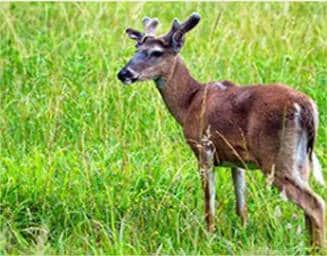ANIMALS
Arguably the most famous species of animal native to the Smoky Mountains is the black bear. It is estimated that more than 1,500 bears live in Great Smoky Mountain National Park, meaning the population density is around two bears per square mile! However, just because there are a lot of them doesn’t necessarily mean that you’ll see one on your visit. There are no specific places where you can go and be guaranteed to see a bear. They are most active in the late spring and summer months especially early in the morning and late in the evening. Cades Cove is a good place to go if you’re looking for the possibility of a bear sighting (or any other wildlife for that matter), but as previously stated, bears can be seen almost anywhere in the park.
Over 200 species of birds are regularly sighted in the park
Of the 65 other mammal species documented in the park, the white-tailed deer, elk, groundhog, chipmunk, and some squirrel and bat species are the most commonly seen. Over 200 species of birds are regularly sighted in the park and 85 of those migrate from the neotropics. Some 120 species nest here. Several bird species that are listed as Species of Concern breed here, making the park an important source for repopulating areas outside the park that are showing declines in the numbers of these birds.
Surrounded by warm lowlands, the cool, moist, climate of the park’s highest elevations creates islands of habitat suitable for animals commonly found in more northern areas, allowing them to live far south of their present primary ranges. Northern species such as the northern flying squirrel, red squirrel, and rock vole thrive at high elevations, while the Northern Saw-whet Owl, Canada Warbler, Common Raven, and other birds reach their southern-most breeding point here in the park.
Over 700 miles of streams in the park support fish. The park boasts over 50 native fish species, including the brook trout, whose fragile habitat is being wrested from the non-native rainbow and brown trout by active fisheries management. Low elevation, slower and warmer streams have the greatest aquatic diversity including four reintroduced federally threatened and endangered small fish: the Smoky Madtom, Yellowfin Madtom, Spotfin Chub, and Duskytail Darter.
Great Smoky Mountains National Park has been called the “Salamander Capital of the World.” Climatic and geologic factors have combined to spur the development of 30 salamander species in five families, making this one of the most diverse areas on earth for this order. In fact, lungless salamanders have undergone an extraordinary level of evolutionary diversification in the park.

